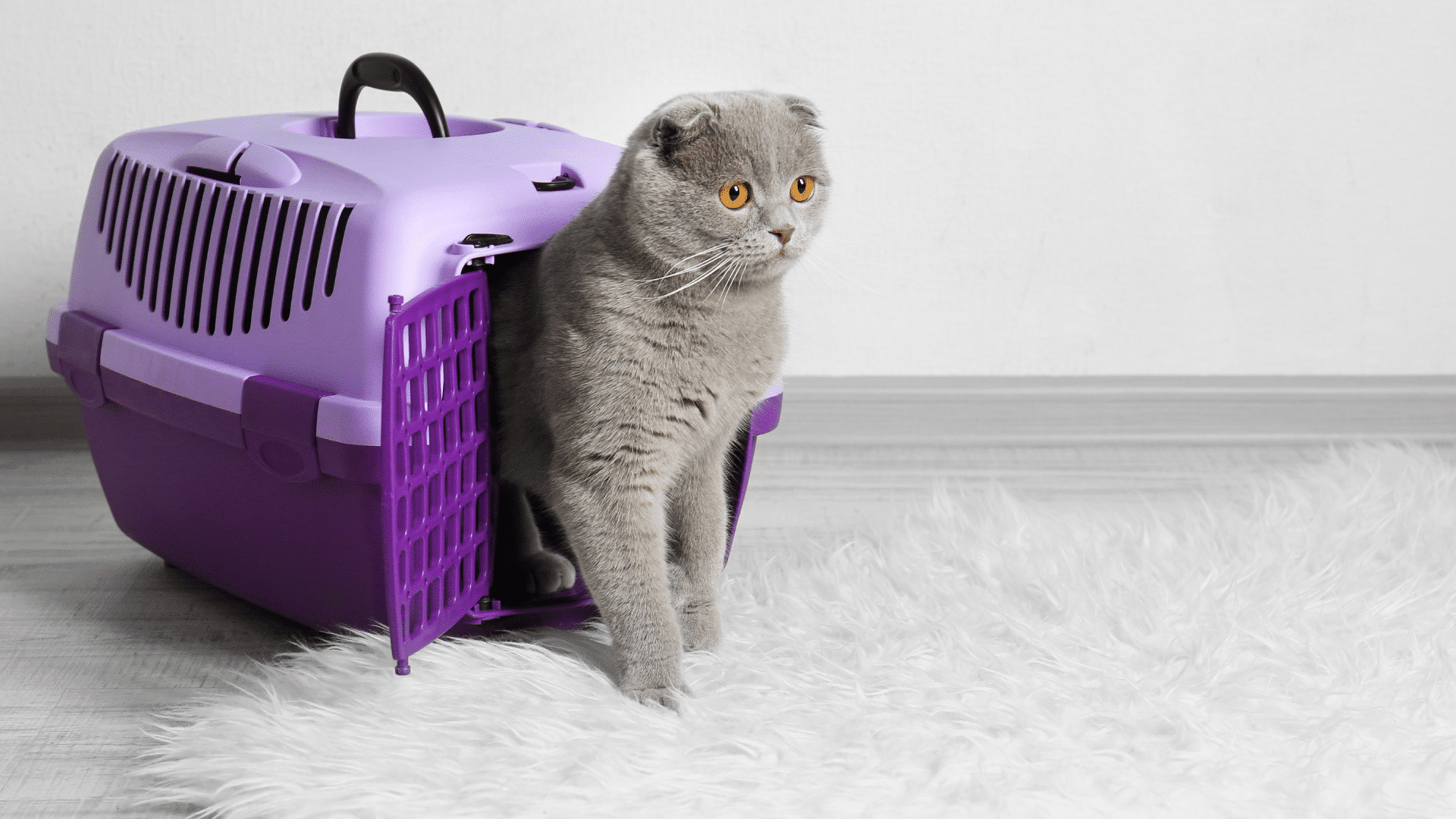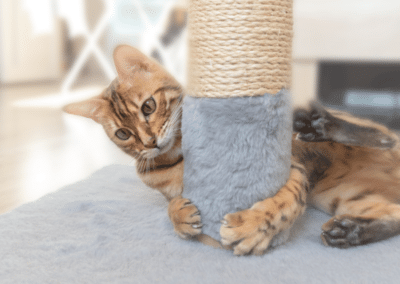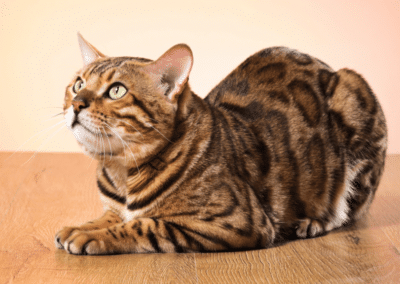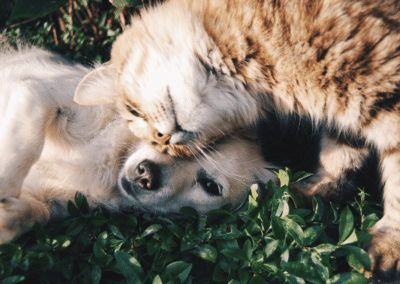First off, congratulations on your new cat! While this is a celebratory moment for you, it’s most likely an overwhelming transitional moment for your new furry feline. Cats are commonly referred to as creatures of habit, so being introduced to a whole new environment may take them some time to adjust. Whether you live alone, have children, or live with additional pets, let’s outline the steps you should take when introducing a new cat into your home.
Planning ahead and preparing for a slow patient experience will improve the chances of your new cat successfully acclimating to their new home. The best way to approach this is by preparing a “safe room” that eliminates any potential for them to perceive threats. Cats feel most comforted in small spaces where they feel as if they could hide from potential imposing dangers. Be sure to provide everything your cat will need in their safe room, such as their:
- Litter Box
- Comfy Cat Bed
- Food & Water Bowls
- Cat Toys
- Cat Carrier (or Another Hiding Spot)
- Scratching Post
- Pheromone Diffuser
Steps to Take When First Bringing Your Cat Home
Once you’re driving home with your new cat comfortably in their carrier, resist the urge to pet them! Opening the carrier door could risk the possibility of your new cat darting away and getting lost. As soon as you get home, set down your cat carrier in their safe room, let them out, and leave them alone with the door closed. Initially, your new cat may be shy or frightened, as they typically show this by hiding either under furniture or up high on a dresser.
In less than a week, your new feline should be eating, drinking, and using their litter box at a healthy rate. Eventually, they will begin to feel acclimated to their safe room and may show interest in exploring the rest of their new living environment. While it’s important to remain patient and not force them to leave their safe room before they’re ready, simply open the door and allow them to feel comfortable exploring at their own pace.
When adapting to the rest of your house, your new cat will likely wander from room to room to sniff everything and rub their cheeks on specific spots (which leaves their scent behind). During this time, they may act overtly timid and hide from social interactions, although this is a completely normal trait for felines when adapting to a new living environment. Finally, wait a minimum of 2 weeks before letting your cat outdoors as this decreases the chance that they’ll run away from their new home.
Introducing Your New Cat to People and Pets
When introducing your new cat to other pets in your household, don’t expect love at first sight. It’s important to consider your new cat’s innate fears and keep them separated in their safe from other cats and dogs. This is a slow process where all the pets in your house incrementally adapt to each other’s scent. Eventually, your new cat should form positive associations with their animal peers and be able to communicate positively with them.
When introducing cats to children, make sure the child knows to approach them calmly and to pet them with a gentle touch. Some cats acclimate to kids quickly, while others may take a while to get used to all the people in their new environment. The best rule when introducing a new cat into your household is to remain patient and to let their comfortability decide when you should advance them to the next step. Anxiety can cause long-term behavior issues in cats, which is why it’s so vital to calmly introduce them to their new home.
Dr. Bill’s Feline Nutrition
When introducing your new cat to their forever home, it’s important to set them up for success in any way you can, which is why feeding them a biologically appropriate diet from the start is so important. Dr. Bill’s Feline Ultimate Fitness & Health is a super concentrated, fully balanced protein, fatty acid, vitamin, and mineral supplement that also provides multiple specialty nutrients in support of a competent immune system, reduced inflammation, protection against free radical oxidation, to assist with normal digestion and utilization of nutrients, to aid in the nourishment and lubrication of joint cartilage and to protect eye, heart and brain function in cats of all ages. Feline Fitness & Health improves pet wellness, increases activity, maximizes fitness, helps push back normal age-related diseases, maintains physiological processes in a more youthful state and ultimately allows our feline friends to live a longer, healthier, and more enjoyable life.









0 Comments